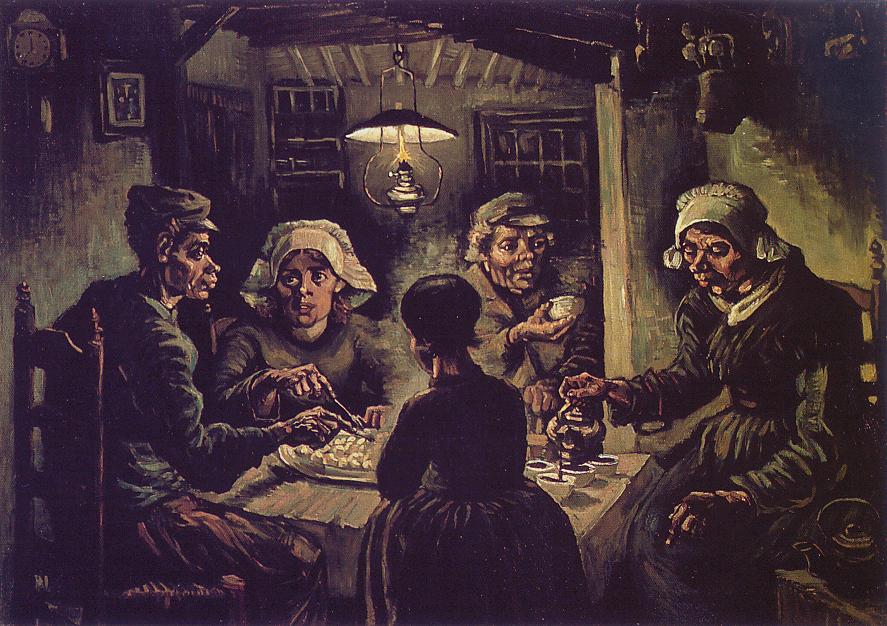…To many Frenchmen, a meal without potatoes is no meal at all, yet the potato has been part of French cuisine for only about 250 years. Introduced into Europe in the 1540’s, the lowly potato was long shunned by the French- some authorities even thought it caused leprosy. But Antoine Auguste Parmentier knew potatoes were not poisonous: captured by the Germans in 1761, he had lived on little else for more than a year.

—Parmentier by François Dumont—WIKI
Parmentier began his campaign for the vegetable in 1771 by publishing a thesis that puffed the potato as a nutritious foodstuff during famines ( other tempting morsels were iris bulbs and couch grass). In 1785, warming to his task, he presented Louis XVI with a small bouquet of potato flowers. Louis put one of the purplish blooms into his buttonhole, and the rage for the potato plant was on.
Parmentier continued his publicizing. He served an elaborate dinner, including a “fish” course composed entirely of potatoes. And then, in 1787, he planted fifty acres on the Sablon plain in potatoes and, to excite curiosity, had the field closely watched during the day by the Garde Francaise. But every publicity campaign has its limits: at night, the soldiers went home, leaving the precious field unguarded. Fortunately, for gastronomy, the potato plants survived.

—He began wearing ragged, unwashed clothing, did not respond to acquaintances on the street, and lived an isolated existence. His only activity was to draw and paint in ways that conveyed his sympathies for the hard lives of peasants. His greatest painting, “The Potato Eaters” was the result of his deep empathy with the peasant class (See painting below).
An old man reported that when he was ten years old he knew Vincent Van Gogh, who he frequently saw painting landscapes in Nuenen, Belgium. From the viewpoint of children in the neighborhood, Vincent Van Gogh was a curious sight indeed. He would sit on a stool alongside a roadway painting scenery for hours at a time. The witness describes Van Gogh as a “funny, red-bearded man with a straw hat, smoking a pipe and painting intently, and not responding to anyone’s attempts to communicate with him.” —click image for source…
ADDENDUM:
(see link at end)… Le Parfait boulanger [The Perfect Baker] followed and was also a great success in 1778. Other publications on other meals followed. On June 8, 1780, a school for bakery was founded in the capital city. Parmentier was one of its professors. He went on with books dealing with various topics. In 1782, he was offered the position of chemist for the German monarch. He refused the position. In 1784, his memoirs devoted to the use of maize in the South of France were awarded with a prize from the Academy of Bordeaux. His memoirs were once again published in 1812 and were paid for the Empire and contributed to improve the cultivation of this starchy food .
In 1787, Louis XVI of France entrusted him with fifty-four arpents to cultivate. During the day, soldiers guarded the land and at night, Parmentier let poor people to steal plants of potato that then they could cultivate for their own needs. In 1789, his Traité sur la culture et les usages de la pomme de terre, de la patate et du topinambour [Treaty on the cultivation and the use of potato, spud and Jerusalem artichoke] was published on Louis XVI’s order. Parmentier had succeeded. Read More:http://www.napoleonicsociety.com/english/riaudparmentier.html





 COMMENTS
COMMENTS